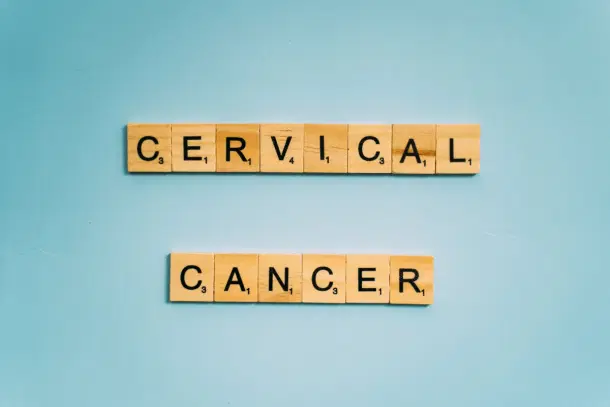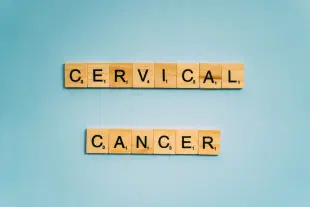Science
Budget 2024 Mentions Vaccination In Girls To Prevent Cervical Cancer — Why That Matters
Karan Kamble
Feb 01, 2024, 05:13 PM | Updated 05:12 PM IST
Save & read from anywhere!
Bookmark stories for easy access on any device or the Swarajya app.


The Union government will encourage vaccination for girls in the age group of 9-14 years for prevention of cervical cancer, Finance Minister Nirmala Sitharaman said during her presentation of the Interim Budget 2023-24 in Parliament on 1 February.
Such a vaccination push would be consistent with the recommendation of the World Health Organization (WHO) for the prevention of cervical cancer, whose primary cause is persistent infection with the human papillomavirus (HPV).
“Being vaccinated at age 9–14 years is a very effective way to prevent HPV infection, cervical cancer and other HPV-related cancers,” WHO says, adding that HPV vaccines should be given to girls in this age group “as a priority… before they become sexually active.”
Cervical cancer ranks as the fourth most prevalent cancer among women worldwide, with an estimated 604,000 new cases and 342,000 deaths reported in 2020. In India, cervical cancer is the second most common cancer among women, as well as the second most common cancer among women aged 15 to 44 years.
Only 1 per cent of women in India undergo screening for cervical cancer, falling significantly short of WHO’s recommendation that at least 70 per cent of women should be screened for the disease, as per a data report in The Hindu.
About 5 per cent of women in the general population are believed to carry cervical HPV-16/18 infection at any given time, with 83.2 per cent of invasive cervical cancers being attributed to these high-risk HPV types (16 or 18), as per the HPV Information Centre.
HPV is a common sexually transmitted infection that can affect the skin, genital area, and throat.
Nearly all sexually active individuals will encounter HPV at some point, often without experiencing any symptoms. In most cases, the immune system naturally clears the virus from the body. However, persistent infection with high-risk HPV strains can lead to the development of abnormal cells, which may progress to cancer.
When HPV persists in the cervix (the lower part of the uterus or womb that opens into the vagina, also known as the birth canal) without treatment, it is responsible for 95 per cent of cervical cancer cases.
Typically, it takes 15-20 years for abnormal cells to transform into cancer. However, in individuals with weakened immune systems, such as those with untreated human immunodeficiency virus (HIV), this process can accelerate, taking only 5-10 years. Women living with HIV face a sixfold higher risk of developing cervical cancer than those without HIV.
Effective prevention strategies include prophylactic HPV vaccination, as well as screening and treatment of pre-cancerous lesions. Early diagnosis and prompt treatment can lead to successful outcomes for cervical cancer patients.
Across the globe, efforts are underway to expedite the elimination of cervical cancer, with countries committing to three specific targets to achieve this ambitious goal by 2030.
The WHO Global strategy defines elimination of cervical cancer as reducing the annual number of new cases to 4 or fewer per 100,000 women. The three targets are:
Vaccination: Ensure that 90 per cent of girls receive the HPV vaccine by the age of 15.
Screening: Aim for 70 per cent of women to undergo high-quality screening tests between the ages of 35 and 45.
Treatment: Ensure that 90 per cent of women diagnosed with cervical disease receive appropriate treatment.
A technical advisory group for immunisation in India has recommended the introduction of the HPV vaccine in its universal immunisation programme with a “one-time catch-up” for girls in the age group of 9-14 years followed by a routine introduction for girls aged 9 years, as per an Education Ministry note from December 2022.
The vaccination programme would primarily be administered through schools, targeting girls in classes 5 to 10, as school enrollment for girls is high. For girls unable to attend school on the campaign day, vaccinations would also be provided at health facilities.
Additionally, for out-of-school girls aged between 9 and 14 years, the campaign would be conducted through community outreach and mobile teams. The U-WIN App will be used for registration, recording, and reporting of vaccination numbers.
A couple of weeks ago, the Ministry of Health and Family Welfare clarified that, contrary to media reports speculating the launch of a HPV vaccination campaign in the second quarter of this year to target girls in the 9-14 years age group, they were yet to take a decision on the roll-out of HPV vaccination in the country.
Back in September 2022, India announced the launch of its first indigenously produced vaccine that effectively fights strains 16 and 18 of HPV, the two types that account for 70 per cent of all cervical cancers worldwide.
The vaccine, Ceravac, is affordable in comparison to the current cervical cancer vaccines available in the country, such as Gardasil and Cervarix. It also has the same efficacy as vaccines procured from other countries, as per a November 2023 study published in the medical journal Lancet.
Ceravac, if rolled out at scale, can save the lives of a large number of girls and women.
Also Read: Why the rollout of India’s first indigenous cervical cancer vaccine is a landmark achievement
Karan Kamble writes on science and technology. He occasionally wears the hat of a video anchor for Swarajya's online video programmes.





